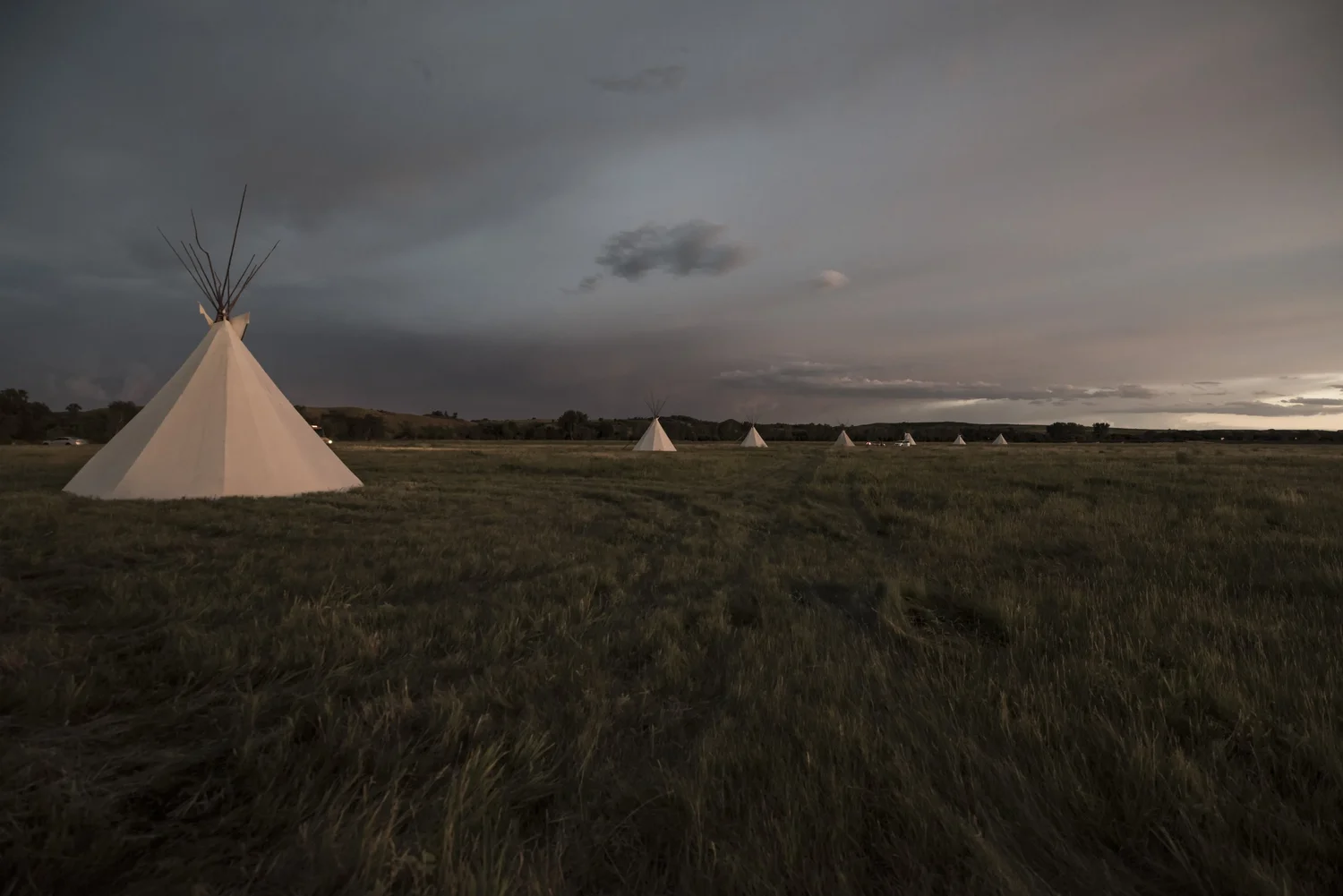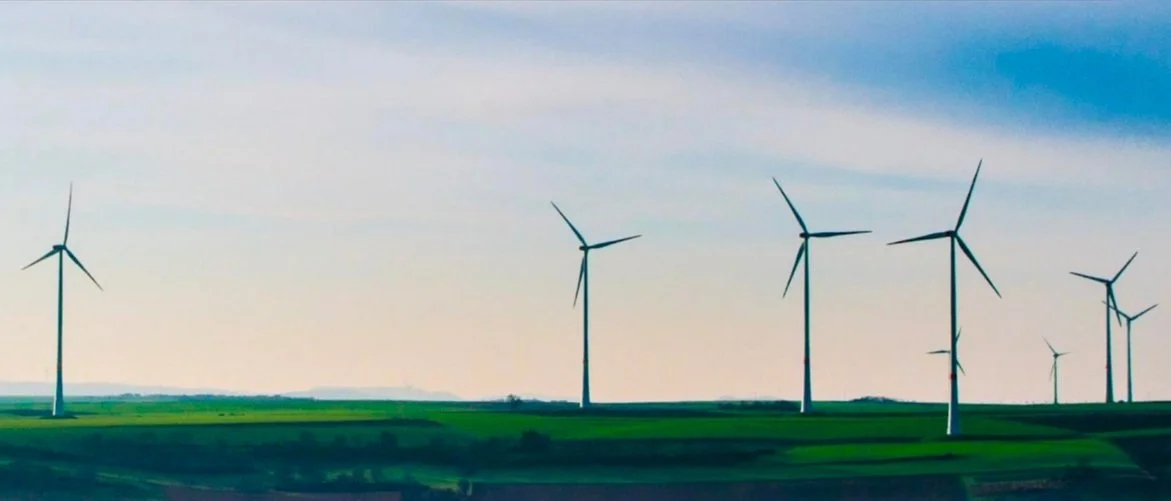
For the people of the Standing Rock Sioux Tribe, our connection to the land is about more than just survival. It is phesolta, or “connectedness” – and is deeply spiritual.
The Standing Rock Renewable Energy Power Authority (or “SAGE” for short), is a renewable energy power authority that reflects us, the Lakota/Dakota people of Standing Rock, and our traditions, perspectives, and connection to the land. As an institution, SAGE offers a new model of energy management for Tribal governments and communities – one that prioritizes people, land, and nature over a strict profit motive. Specifically, SAGE manages the Standing Rock Sioux Tribe’s renewable energy resources for the tribe’s economic development.
A Native-owned entity, the acronym “SAGE” stands for Strategic, Advancement, Goals, and the Environment, and its first project is a 235MW wind farm to be built right there at Standing Rock. Called Anpetu Wi (“morning light”), the wind farm will be the single largest revenue source for Standing Rock, with profits to be reinvested into future projects to benefit the Tribe and future generations.
Earth in Balance
Central to our perspective is the idea of “Natural Law”, a fundamental respect for nature and the balance of all living things. This had been central to our ways of life for centuries, until it was stripped from us (along with our land, language, our own history, and other deep aspects of our cultural identity) at the barrel of a gun during the violent government-backed colonial expansion westward across the Americas during the 18th, 19th, and early 20th centuries.
Rather than respecting and replenishing the land, the capitalist interests that replaced our fundamentally sustainable traditions have plundered the United States’ natural resources for profit. Now, 300+ years later and facing consequences of unbridled exploitation, capitalism is making space for “sustainability” (aka, Natural Law) as business strives to find balance between profits and environmental or social impact.
The term “sustainable” is new, but the idea is not. Finding balance for the Earth, equity, and economy is, and always has been, a core belief and way of life for Indigenous people. Through SAGE, we work to find connection with Natural Law while using present day technology and economic tools to achieve these goals.

Standing Rock Sioux Tribe Values, History, and Present Challenges
Surrounded by tall prairie grasses, wide plains, and buttes, it is easy to see how a wind farm could thrive on the Standing Rock Sioux Reservation. Standing Rock spans 2.3 million acres across the borders of central North and South Dakota; our reservation is the fifth largest in the United States.[i] Home to the Lakota and Dakota nations, the Standing Rock Sioux Tribe is committed to protecting the language, culture, and well-being of our people through economic development, technology advancement, community engagement, and education.
Originally, our ancestors lived in the Great Lakes Woodland area. We were then pushed West in the 17th Century as a result of the fur trade and Gold Rush, which greatly disrupted our society.[ii] As we adapted to life on the Plains, our culture reformed to center around the horse and buffalo.
“Rather than respecting and replenishing the land, the capitalist interests that replaced our fundamentally sustainable traditions have plundered the United States’ natural resources for profit. Now, 300+ years later and facing consequences of unbridled exploitation, capitalism is making space for ‘sustainability’…”
This changed again when U.S. reservation policies in the mid-to-late 1800s formally restricted Indigenous rights under U.S. law. To make our people stationary and keep us on reservations, the government distributed food rations to discourage us from hunting, gave us certain types of clothing to encourage assimilation, and established schools that refused to teach our language or history – for generations.
This intentional dismantling of our way of life affect us to this day. The people of Standing Rock have long been excluded from participation in economic opportunity and activity. Our county is one of the top 10 poorest in the United States, with a 40% poverty rate and a 70% unemployment rate on the reservation.
Through it all however, certain values – family, community, connectedness, the common good, and our individual and collective responsibility to future generations – these have remained central to our way.

Origin of SAGE
Energy management is one area where changing the status quo will greatly impact our people’s economic position. Energy inequity is a core driver of our economic disparity, and this is where SAGE aims to make great change.
The cost of electricity for those on Standing Rock is more than double the cost in nearby Bismarck, ND. The Standing Rock Sioux Tribe sells power to the regional grid at $0.026 cents per kilowatt hour, yet purchases that same power back from the same regional grid at over $0.14 cents a kilowatt hour. This is a huge disparity; people in our Nation cannot afford to pay increasing energy bills. We want to (and need to) generate our own power in order to help create affordable, sustainable living for our people.
“Energy inequity is a core driver of our economic disparity, and this is where SAGE aims to make great change.”
This is the core economic idea behind SAGE, which started in 2007 when developers began coming to the Standing Rock suggesting we open ourselves up to commercial wind farm development. Commercial developers wanted to partner with us, earn tax credits or tax breaks, and profit off of their investments. But with the model they proposed, the Tribe would only earn income on the lease of our land. Dave Archambault II, Tribal Chairman at the time, saw an opportunity for something more.
“I believe wind energy is one way to bring our Nation out of poverty, but we can’t just allow another infrastructure project happen with no benefit to us, we should be owners and developers of the project,” Archambault said.
With the goal of owning a wind farm on our Tribal land, and the mindset of moving from economic exclusion to energy ownership, the Tribe secured a grant to establish a Renewable Energy Department and hired expert technical consultants. The Tribe would later establish SAGE as a Section 17 Tribal entity as the legal home for business development and operational management of this effort. This distinction of a Section 17 entity preserves the integrity of the Tribe’s decision-making process by separating Tribal and SAGE business decisions. SAGE acts as a public power authority (PPA) under Tribal government, but apart from it, with a mandate to develop, control, and operates all the energy production assets within the reservation. SAGE institutionalizes Standing Rock’s involvement in renewable energy projects such as the wind farm, holds the Standing Rock Sioux Tribe’s equity interest in projects, and facilitates agreements with third-party entities.
Dakota Access Pipeline Strengthens Our Voice

The groundwork was set, but the real catalyst for launching SAGE was the 2016 protests against the Dakota Access Pipeline (“DAPL”). DAPL is a nearly 1,200-mile oil pipeline system designed to carry crude oil from North Dakota to Illinois.[iii] The pipeline runs near the Standing Rock Reservation, under the Missouri River, and threatens our primary water source, Lake Oahe. But the federal government did not give Standing Rock a say in the DAPL process, project scope, or pipeline route. It was yet another thing that in a long history of actions that would directly (and negatively) impact us and was being doing done to us without our input.

“The government approval process for infrastructure projects like DAPL happens without seeking our Nation’s insight or approval. When something goes wrong, the greatest impact lies on us,” Archambault said. “Through SAGE, our tribe is advocating for an appropriate way to develop energy with respect to Mother Earth, protecting sacred places and our sources of life.”
We at Standing Rock responded to the government’s actions with the tools we had – legal challenges, and massive public demonstrations. While the #NoDAPL hashtag trended worldwide on social media, we camped and protested at Standing Rock. Thousands joined our cause in person and witnessed the excessive force of security workers against us including the use of pepper spray, attack dogs, and water cannons sprayed on protestors in cold November weather. More than 400 people were arrested, some of whom reported inhumane and harsh treatment in jail.
“Standing Rock’s response to DAPL was like a spark, uniting ancestral ideals with action, like the four winds of Tate Topa bringing change and often new life.”
The intent of DAPL was to provide energy in the form of fossil fuel. The intent for SAGE is also to provide energy, but not in the form of a depleting resource, rather, in the form of renewable energy. “Through SAGE, our tribe is advocating for an appropriate way to get energy without emptying Mother Earth, disturbing sacred places, or potentially contaminating our life source,” said Archambault, who now serves as SAGE’s business advisor. While DAPL continues to facilitate energy inequity, SAGE actively promotes freedom and sovereignty, with its profits being reinvested into future projects, and other infrastructure works that will benefit the Tribe.
DAPL was ultimately completed in 2017. We’re disappointed, but we emerged from the crisis with renewed strength. Joe McNeil Jr. used to sit on Tribal Council, and is now General Manager of SAGE. To him, the Standing Rock’s response to DAPL was like a spark, uniting ancestral ideals with action, like the four winds of Tate Topa bringing change and often new life.
“DAPL helped catalyze our people to make our own decisions on our own behalf,” McNeil said.
SAGE Today
At SAGE, form equals function – its business advisor, general manager, and Board of Directors (itself women-led) all are enrolled members of the Standing Rock Sioux Tribe, and support SAGE’s goals and day-to-day operations. And a host of internationally-recognized partners collaborated with SAGE, including the Bush Foundation, Wallace Global Fund, and the Sierra Club Foundation, among others. SAGE also continues to work with a variety of technical consultants and advisors, including: fiscal sponsor Seventh Generation Fund; economic strategy and investment advisors Justice Capital; coordination and project management consultant Petrika’s Solutions; operations, communications, technology, and other strategic support through Connexus Capital; and accountant Haga Kommer.

And the wind farm is only the beginning. By the end of 2025, SAGE plans to create a community-led economic development strategy to begin attracting (and launching) new projects. Current projects under consideration include regenerative agriculture, housing & microgrids, electric vehicles, charging stations, and commercial solar energy, among others.
Another goal is to build the infrastructure and operational capacity of SAGE and the Standing Rock community more broadly to develop and lead these new projects. For example, the Anpetu Wi Wind Farm alone will employ many skilled and non-technical positions – from technicians to utility line workers, in IT system management, and across billing and sales. And this is just the first project. We intend for there to be generations of workforce opportunities as a direct result of SAGE’s work.
It is our commitment that revenue from the wind farm and future SAGE projects will be reinvested into local infrastructure and education. SAGE plans to invest in a museum and interpretive center that will offer educational opportunities, promote tourism, and bring revenue to Standing Rock. We also plan to help finance a federal credit union to expand access to capital for our people. Our investments in the tribe’s Mni Wiconi Health Clinic and STEM education will impact the health and well-being of current and future generations. We are also committed to reclaiming decommissioned land and recycled energy assets.
Lastly, we are committed to sharing our institutional knowledge. We plan to develop a playbook of the “SAGE model”, which we plan to freely share with other Tribes and communities across the country looking to develop and revitalization their world.
How You Can Help
SAGE exists to make a real difference in peoples’ lives. The Anpetu Wi wind farm will provided Standing Rock with a clean and sustainable source of revenue, all while honoring and reinforcing phestola – our spiritual connectedness to the land and everything that is. Moreover, profits from the wind farm will be reinvested into the community to improve badly-needed infrastructure and economic development efforts. This is why sovereignty and self-determination are so important – we’ll be able to direct the flows of this reinvestment in ways that benefit our people and our children for generations. And it all begins with Anpetu Wi.
If you’d like to donate and support our efforts directly, we invite you to visit our dedicated to the wind farm website – www.anpetuwi.com – and join a community of over 6500+ who are helping us make this a reality.
To learn more about everything else SAGE is up to, follow us on Facebook, Instagram, and on YouTube, or visit us at www.SAGESRST.com.
[i] TravelSouthDakota.com – “The Standing Rock Sioux Tribe” (link)
[ii] 2018-2022 Standing Rock Sioux Tribe Comprehensive Economic Development Strategies (CEDS)
[iii] United States Army Corps of Engineers (USACE) – “The Dakota Access Pipeline” (link)
* Photo credit: Whitebull Photography



